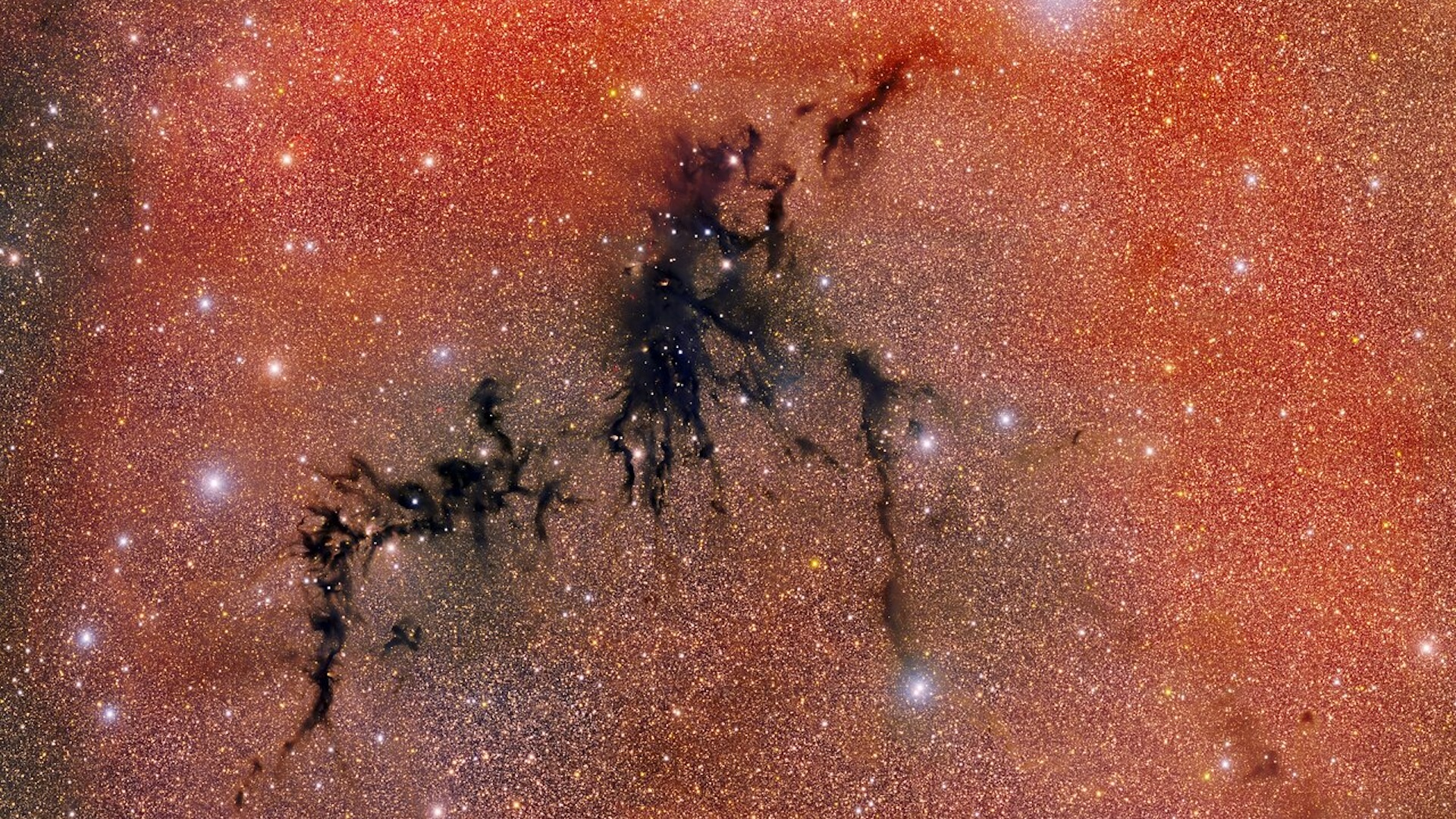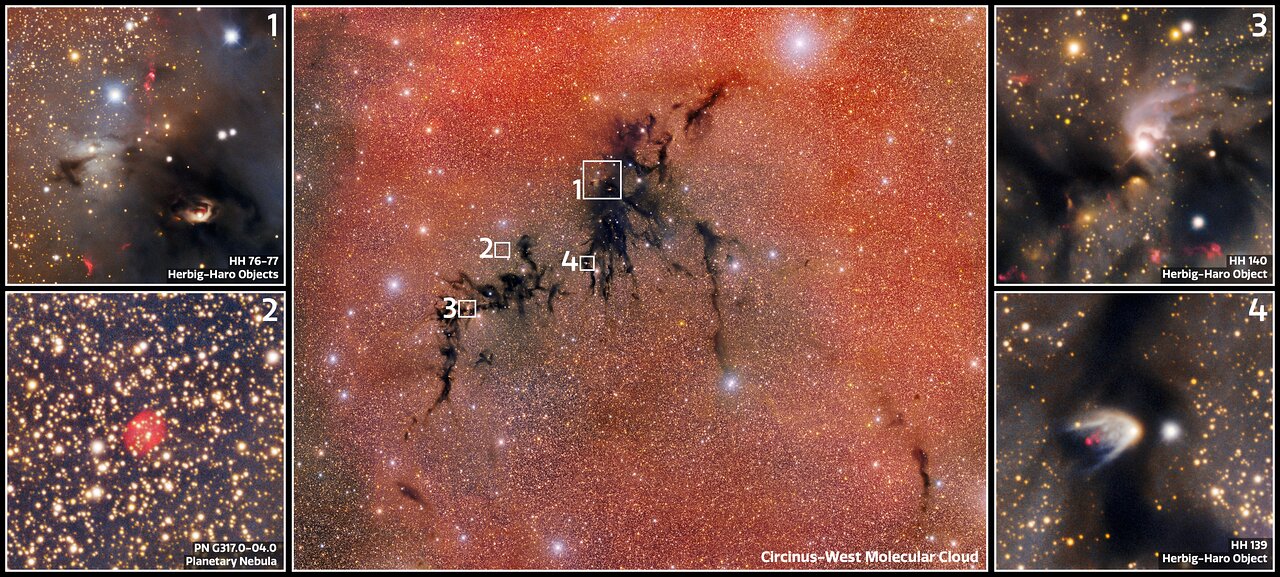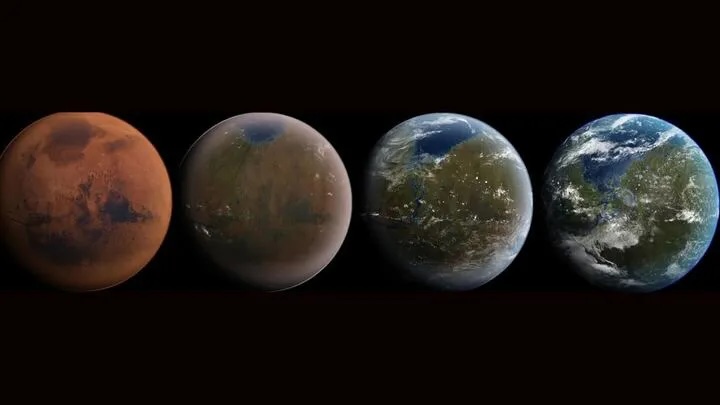Scientists spot a 'dark nebula' being torn apart by rowdy infant stars — offering clues about our own solar system's past
The National Science Foundation's Dark Energy Camera reveals a stunning glimpse into the 'dark nebula' known as the Circinus West molecular cloud, a region of space that's so dense with gas that light can't escape it.

A battle is raging between darkness and light in the constellation Circinus, and a new image from the National Science Foundation's Dark Energy Camera captures a key turning point in the cosmic campaign.
Known as the Circinus West molecular cloud, the ominous black structure at the center of the image is a vast conglomeration of star-forming gas located in Circinus, the compass constellation, about 2,500 light-years from Earth. Objects like these are sometimes known as "dark nebulae" because they are so dense with gas and dust that light cannot penetrate them.
The dark cloud shown here stretches an estimated 180 light-years across, or more than 60 times wider than our solar system, and contains the equivalent mass of 250,000 suns.
In such a dense and dusty region, darkness cannot last forever; the Circinus West molecular cloud is an active stellar nursery, where the cold, dense gas routinely collapses into newborn stars. You can see the stellar nursery come to life in this image, with bright pinpricks of light showing where stellar infants have started to erupt with enormous jets of ionizing energy, pushing through the overwhelming gloom to make themselves known. Behind the dark boundaries of the molecular cloud, a tapestry of distant stars emits an orange background glow.

The Dark Energy Camera, mounted atop the Cerro Tololo Inter-American Observatory in Chile, is one of the most powerful digital cameras in the world. An ever-more-zoomed-in image of the molecular cloud reveals more telltale structures indicative of star formation, including a number of bizarre pockets of light known as Herbig-Haro objects.
These regions form when fast-moving gas released by young stars crashes into the slower-moving gas that surrounds them. The gas heats up and pushes outward, creating lightsaber-like jets of colorful radiation. You can see several of these jets highlighted in the boxes in the annotated image above.
Sign up for the Live Science daily newsletter now
Get the world’s most fascinating discoveries delivered straight to your inbox.
As the young stars belch radiation, they gradually erode holes into the dark gas cloud surrounding them, sculpting it into the tattered, tendril-like shapes seen here. Regions like this, where stars interact with and alter their environment at various stages of their development, provide a "natural laboratory" for studying the dynamics of star formation, as well as the evolution of molecular clouds and galaxies in general, representatives of the National Science Foundation's NOIRLab wrote in a statement.
It's possible that our own solar system formed under similar conditions, the researchers wrote. So, in this cosmic battle of light and darkness, we may get a better understanding of our cosmic region's chaotic history.

Brandon is the space/physics editor at Live Science. His writing has appeared in The Washington Post, Reader's Digest, CBS.com, the Richard Dawkins Foundation website and other outlets. He holds a bachelor's degree in creative writing from the University of Arizona, with minors in journalism and media arts. He enjoys writing most about space, geoscience and the mysteries of the universe.
You must confirm your public display name before commenting
Please logout and then login again, you will then be prompted to enter your display name.
